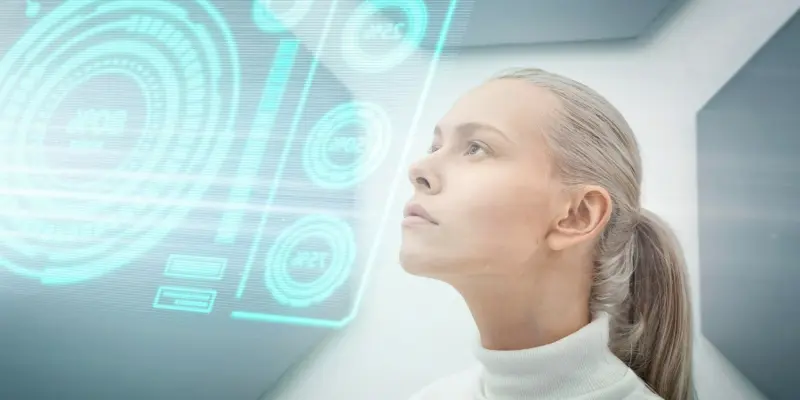In the ever-evolving landscape of technology, a profound transformation seems to be taking shape within digital workspaces. Google has recently made waves at its Google I/O developer conference with its unveiling of AI-powered features in Google Workspace tools, poised to revolutionize collaboration and productivity. These enhancements showcase advances like real-time voice translation in Google Meet, immersive 3D videoconferencing through Google Beam, and workflow automation via Workspace Flows, all promising significant shifts in digital communication and collaboration. With such innovative strides, Google positions itself at the forefront of reshaping traditional work environments into more dynamic, efficient spaces that transcend previous limitations. The introduction of AI capabilities not only highlights technological advancements but also signals a promising transformation in global communications and interactive workplace experiences.
Real-Time Communication Breakthroughs
Central to Google’s recent announcements is the breakthrough in real-time language translation, a move set to redefine cross-linguistic communication. Exploiting the prowess of its AI, Google is now capable of translating speech almost instantaneously from English to Spanish and vice versa. This remarkable feature maintains linguistic nuances such as tone and expressions, thus bridging language divides effortlessly and enabling more natural conversations across multilingual settings. Initially available in beta for select users, this technology is anticipated to debut in enterprises later this year, opening doors beyond individual interactions. This innovative approach not only shortens the gap between diverse language speakers but also propels businesses toward more inclusive communication practices, fostering broader collaboration and understanding. As language barriers diminish, the realm of seamless global interaction expands, encouraging a more interconnected business atmosphere worldwide.
Immersive Videoconferencing and Visual Enhancements
Another noteworthy development is Google’s endeavor to elevate videoconferencing experiences with the introduction of Google Beam. This platform emerges from the extensive research tied to Project Starline, transforming traditional 2D video interactions into immersive 3D experiences. Google Beam employs six cameras to capture multiple angles, combined with AI technology that seamlessly merges these perspectives into real-time 3D light-field displays. The result is a significant enhancement in visual fidelity and the accurate portrayal of social cues in virtual dialogues, overcoming challenges intrinsic to conventional videoconferencing. The first devices equipped with Beam technology are slated for release this year, with collaborations with companies such as HP promising further refinement. This cutting-edge innovation ensures that participants engage in a more visually enriched, authentic communication process, redefining the potential of remote interactions and dramatically improving the perception of presence in virtual meetings.
Automated Workflow Optimizations and Productivity Gains
AI’s role in elevating productivity does not stop at communication enhancements. Google’s Workspace Flows introduces AI agents, thoughtfully termed Gems, which streamline organizational tasks like customer service operations. These agents automate processes such as complaint resolution by using internal models to propose solutions and communicate them effectively. Gems operate collaboratively, showcasing their potential to simplify and optimize workflows, thereby boosting organizational efficiency. This automation brings significant benefits, alleviating manual tasks and allowing teams to focus on more strategic objectives. Coupled with new functionalities in Google Chat—such as message subscriptions and membership management—these enhancements enrich conversational dynamics, ensuring precise information dissemination. The seamless integration of these AI tools into everyday operations exemplifies Google’s dedication to releasing innovations that elevate business efficiency and productivity by navigating increasingly complex workplace demands.
Industry Trends and Technological Evolution
Timing their innovations to align with industry-wide trends, Google’s initiatives reflect a growing emphasis on AI-enabled productivity tools, resonating with efforts seen from other industry giants like Microsoft. As both tech leaders compete to become frontrunners in AI enhancements, Google’s strides serve as a testament to its commitment toward automation and intelligent collaboration facilitators. By focusing on the development of comprehensive AI ecosystems, Google is charting new paths for improving collaboration tools within workplaces. Analysts from research institutions like Forrester Research, including J.P. Gownder, acknowledge the potential transformative impact of AI-driven features in everyday applications. This technology promises increased accessibility due to the elimination of specialized equipment needs, offering significant improvements in user experience. As tech companies continue to explore the boundaries of AI integration, the potential for transformative changes in workplace environments becomes increasingly apparent.
Redefining Future Workspaces
Google has made a significant leap in videoconferencing with its introduction of Google Beam, a platform designed to enhance virtual interactions. Evolving from the research behind Project Starline, Beam shifts the typical 2D video format into 3D immersive experiences. It uses six cameras to capture various angles and combines them with AI, creating seamless 3D light-field displays in real-time. This breakthrough improves the visual quality and accurately represents social cues, addressing long-standing challenges in standard videoconferencing. The first devices featuring Beam technology are expected to launch this year. Collaborations with companies like HP aim to further fine-tune this innovation. This advancement allows users to engage in more visually enriched and realistic communication, redefining the possibilities of remote interaction. By dramatically increasing the sense of presence in virtual meetings, Google Beam promises a future where remote conversations feel more personal and connected.

